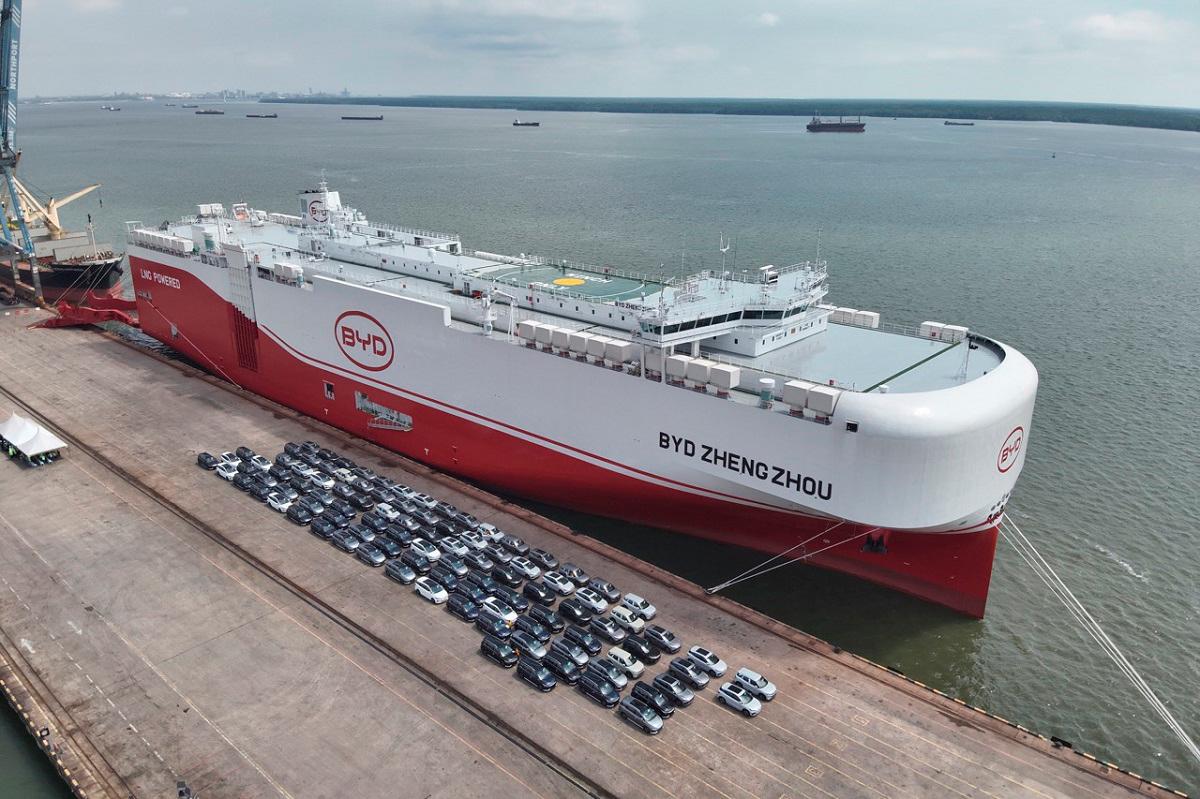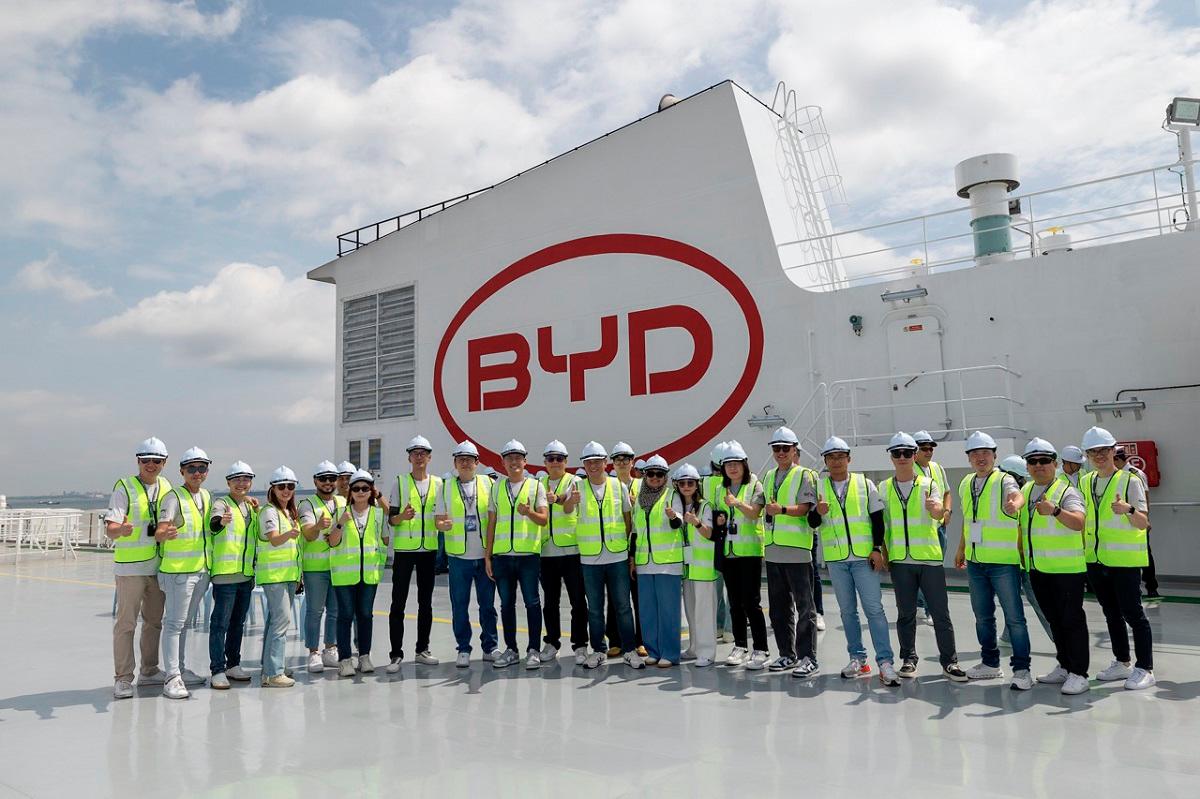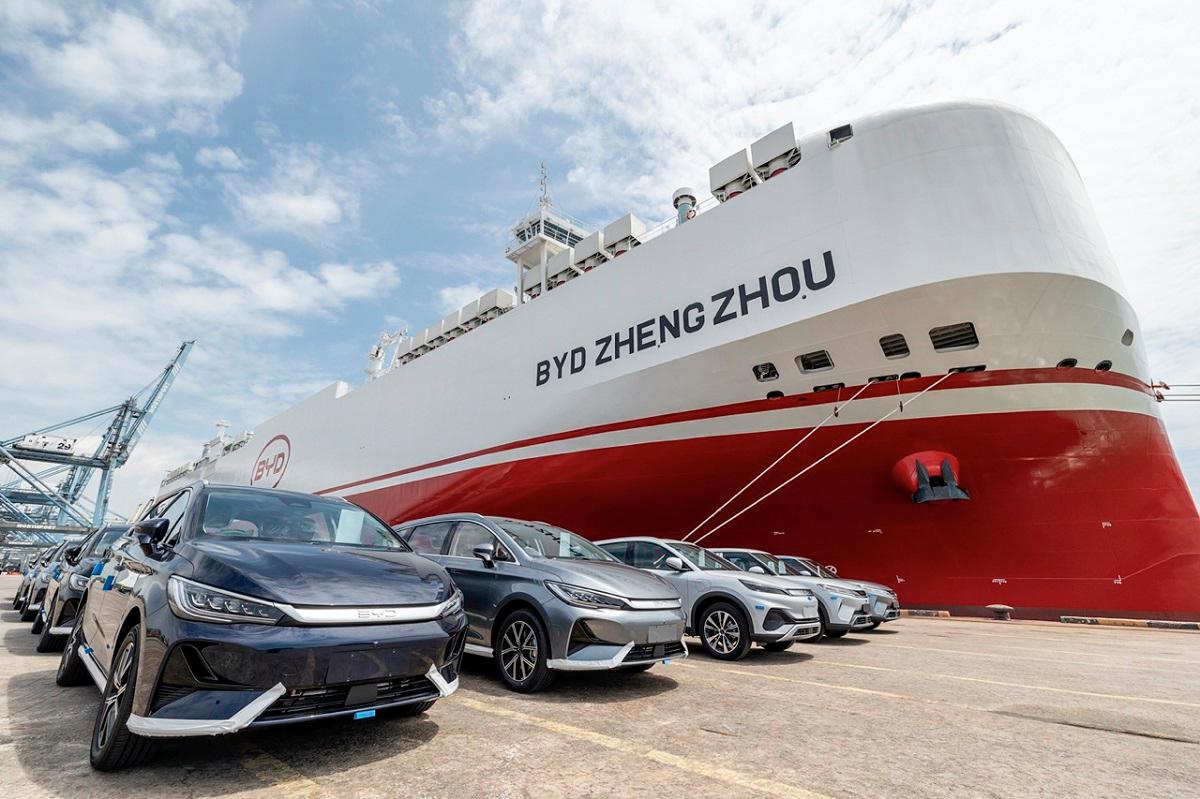BYD has now completed its very own shipping fleet, marking another major step in its global expansion. The eighth and final vessel, the BYD Jinan, officially went into service last week, giving the Shenzhen-based automaker an annual transport capacity of more than one million cars.
What’s remarkable is how quickly the fleet came together. The first ship, BYD Explorer No.1, was only delivered in January 2024. In under two years, the company has built up a full fleet of roll-on/roll-off (RoRo) car carriers, each designed to handle between 7,200 and 9,000 vehicles depending on size.
The line-up now consists of BYD Explorer No.1, Hefei, Changzhou, Shenzhen, Xi’an, Changsha, Zhengzhou and the newly launched Jinan. While Jinan is just starting operations, the other ships are already moving cars across the globe. For instance, BYD Hefei is currently unloading in Europe before heading back to China, Xi’an is due in Barcelona this week, while Shenzhen and Changsha are en route from China to Europe.

Interestingly, BYD’s fleet isn’t just handling cars made in China. This week, the Zhengzhou transported right-hand drive vehicles from Thailand to the UK before making its way to Belgium. It marked the first time BYD exported cars directly from its Thai plant, signalling how seriously the company is treating localised production.
Thailand also gives BYD a useful advantage. Unlike Chinese exports, Thai-built cars aren’t subject to the additional 17% tariff imposed by the EU on top of the existing 10% rate following the anti-subsidy probe into Chinese EVs.
At the same time, BYD is spreading its manufacturing footprint well beyond its home market. Production began at its Brazilian plant in July, where the first Seagull hatchback rolled off the line. In Hungary, its new facility in Szeged is built but won’t begin mass production until 2026.

Work is also ongoing on a plant in Pakistan, due to start operations in 2026, while assembly in Uzbekistan started in mid-2024. Most of these are knock-down kit (KD) operations, with cars shipped in parts from China and assembled locally. BYD has said it wants to steadily increase localisation wherever possible.
The overseas push comes at a time when domestic sales are under pressure. In August, sales in China dropped by 22% to 284,005 units. By contrast, international demand is climbing sharply — overseas sales jumped 157% year-on-year to 80,813 units. So far in 2025, between January and September, BYD has sold 697,072 vehicles outside of China. The company is aiming for overseas markets to contribute 20% of its total sales by next year, with a target of one million units sold abroad.
BYD’s strategy is clear: build the ships, build the plants, and build its presence wherever it can. With its global shipping fleet complete and new production hubs coming online, the company is steadily reshaping itself from a Chinese EV giant into a truly international carmaker.









